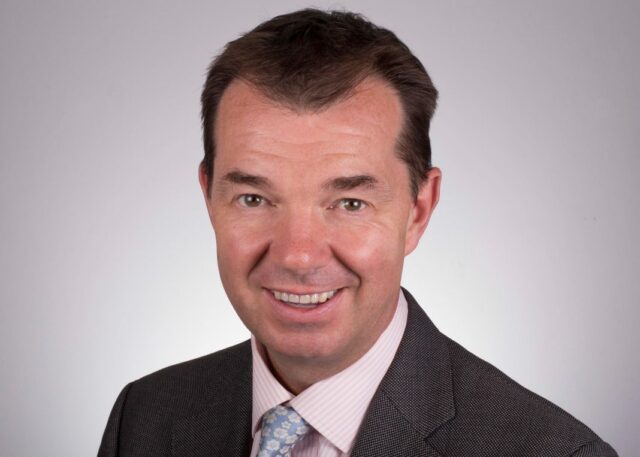INTERVIEW with Guy Opperman, UK, Parliamentary Under Secretary of State (Minister for Pensions and Financial Inclusion. For further expert opinions please use the question-level hyperlink.
| Do you expect the pandemic to have a tailwind or rather a headwind effect on the low-carbon transition pace, taking into account the concerns expressed by some market participants in regard to possible funding cuts and the risk of unsustainable recovery measures?
I believe the economic impact of Covid-19 serves to accelerate and sharpen our focus on ensuring the long-term sustainability of pension schemes’ investment practices. DC pension schemes can no longer be excused for viewing ESG and climate change integration into their portfolio as a constraint. Schemes must fully engage with it as an investment opportunity and identify sustainable, low-carbon pathways out of the impact of lockdown.
I echo Mark Carney’s belief that this crisis offers a once in a lifetime opportunity to build our economy back in a way which can withstand the shock of climate breakdown; change is already happening.
| At the latest PLSA Annual Conference you mentioned the stranded asset risk figures published by the Bank of England. How would you assess the relevance of sustainable divestment strategies in this regard?
Clearly trustees fulfilling their fiduciary duty is key.
The figures I quoted from the Bank of England stress tests published last year showed coal losing 40-65% in the next few years of a low carbon transition, oil losing 30-38% and gas dipping a mere 15-25%. But those average figures disguise a wide range of outcomes. I’ve no doubt that some oil and gas firms will make the transition to successful business models. I’ve no doubt that others will go under. There is great work – made freely available – from the Church of England Pensions Board and the Transition Pathway Initiative – to help us tell who is who.
I don’t mind how schemes take that into account – they can invest in active strategies or they can invest in passive strategies like the great work being done by FTSE Russell with the Transition Pathway Initiative. But they need to own those decisions actively. Making no decision is the worst decision. And saying – someday when things are clearer, I’ll take action- is no better. Someday is now.
| Unreliable risk assessments by companies might enable greenwashing in the framework of the TCFD reporting e.g. hydrocarbons companies reporting minimal or no climate risk, counting on commercially unviable carbon capture and storage technologies. Will spotting such hidden risks remain a case for stewardship?
I think we need to be clear what ‘hidden risks’ really means. Companies shouldn’t be playing games with the data they use and the information they are disclosing. Having said that, I know that even though significant progress has been made in the development of standardised tools for assessing risks, there are still debates about basing assessments on things like carbon capture and storage. There are a number of industry-led groups doing work on climate change, like the IIGCC and the PRI, and these can be a good way for investors to be aware of developments.
Then, of course, investors need to interrogate the information companies disclose and question anything that doesn’t look quite right. As TCFD becomes more widespread, this will become easier and investors will become more skilled at this, and we should see better quality engagement and stewardship. Stewardship is an important part of the low-carbon transition. Nobody wins if companies try to game it or if investors don’t take the time to engage properly.
| One of the concerns in regard to mandatory TCFD aligned disclosures is that even if different scenarios presented by companies are reliable, they are not comparable. If mandatory TCFD reporting follows, can the relevant market participants count on a standard input reference scenario?
Scenario analysis is undoubtedly one of the more complex areas of the TCFD recommendations, but I believe the value in conducting it for all market participants is clear. It’s a case of “no pain, no gain”.
It is still too soon to expect an agreed market solution, but we are beginning to see consensus develop around what the most useful scenarios are for companies and others to use to understand their management of physical and transition risks. As more and more companies take on TCFD reporting, the answers to questions such as “What is the right temperature outcome for a scenario?” or “What shall I assume about the future energy mix?” will become more standardised – this will also be helped by the FCA’s open consultation on TCFD for premium listed issuers.
I would also make the point that in getting investors, such as pension schemes, to consider the most important scenarios for them, at the portfolio-level, trustees will influence, through their asset managers, the scenarios and the decision-useful data being provided by investee firms. This should drive greater consistency and comparability. These are qualities we want to see when pension schemes come to disclose in line with TCFD.
One thing that is central to our approach with pension schemes is that we will not only be consulting extensively on these kinds of complex issues but plan to issue statutory guidance alongside any future regulations to help trustees navigate new requirements such as these.
| Alok Sharma, COP26 president and Secretary of State for Business, Energy and Industrial Strategy in UK, emphasized in his closing remarks to the Petersberg Climate Dialogue that ‘as we recover this transition must be fair and inclusive’ which has officially been your focus since 2017. How can asset owners best contribute to support it?
By meeting their fiduciary duty. There’s such a lot of jargon but I say it as I see it.I see it as selecting your companies according to some rules of your devising, or picking them on a judgment call – and then working with the companies whose stocks you pick. There are no deep and dark secrets.
And whoever you’ve picked, you engage with the firms in whom you invest to make them good corporate citizens. You press them to take account of their environmental impact, to price in their externalities. You get them to treat their staff properly, and work with the communities they live within.
That’s the way asset owners work to support an inclusive transition. To work with companies in whom they invest – whether directly or via their asset managers – to deliver long term sustainable returns to their savers, and sustainable firms, communities and environments. And to hold both asset managers and companies to account.









